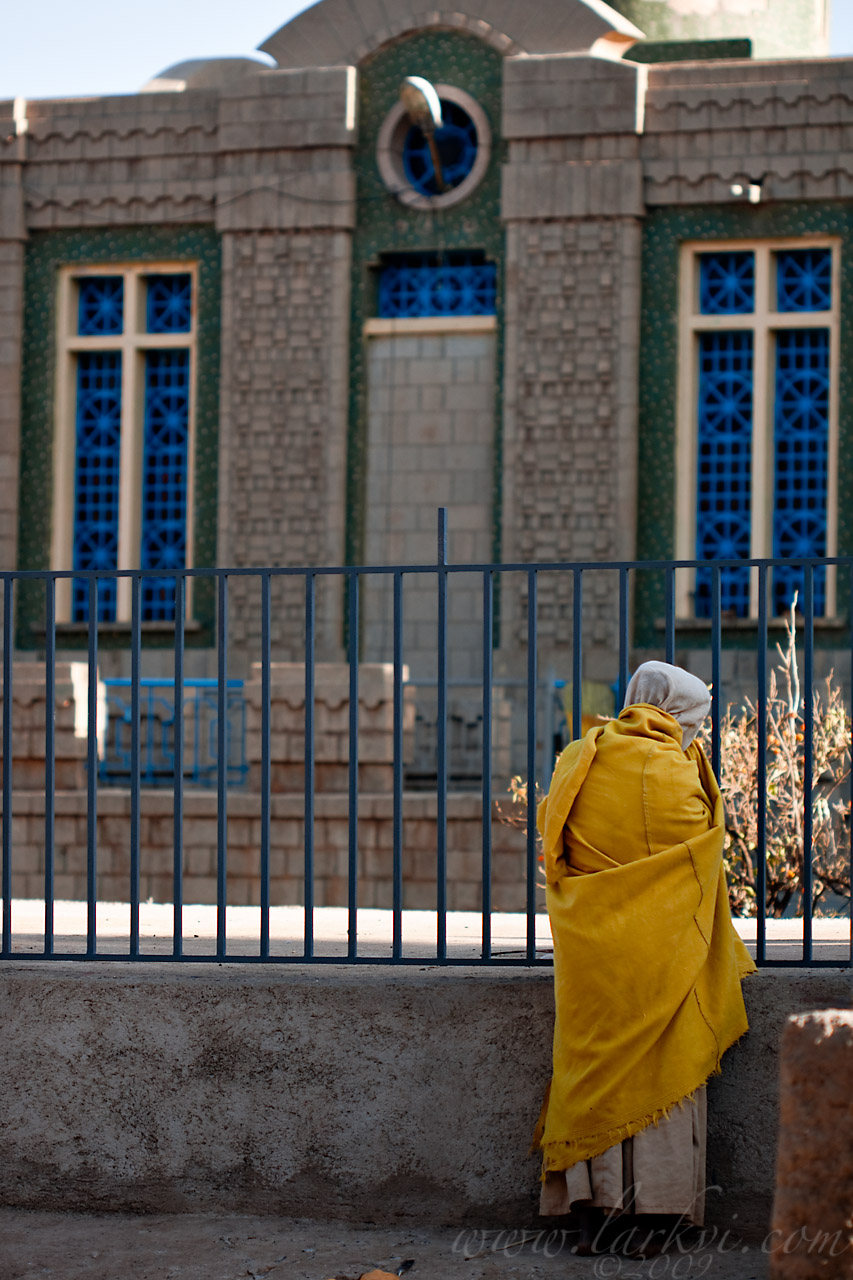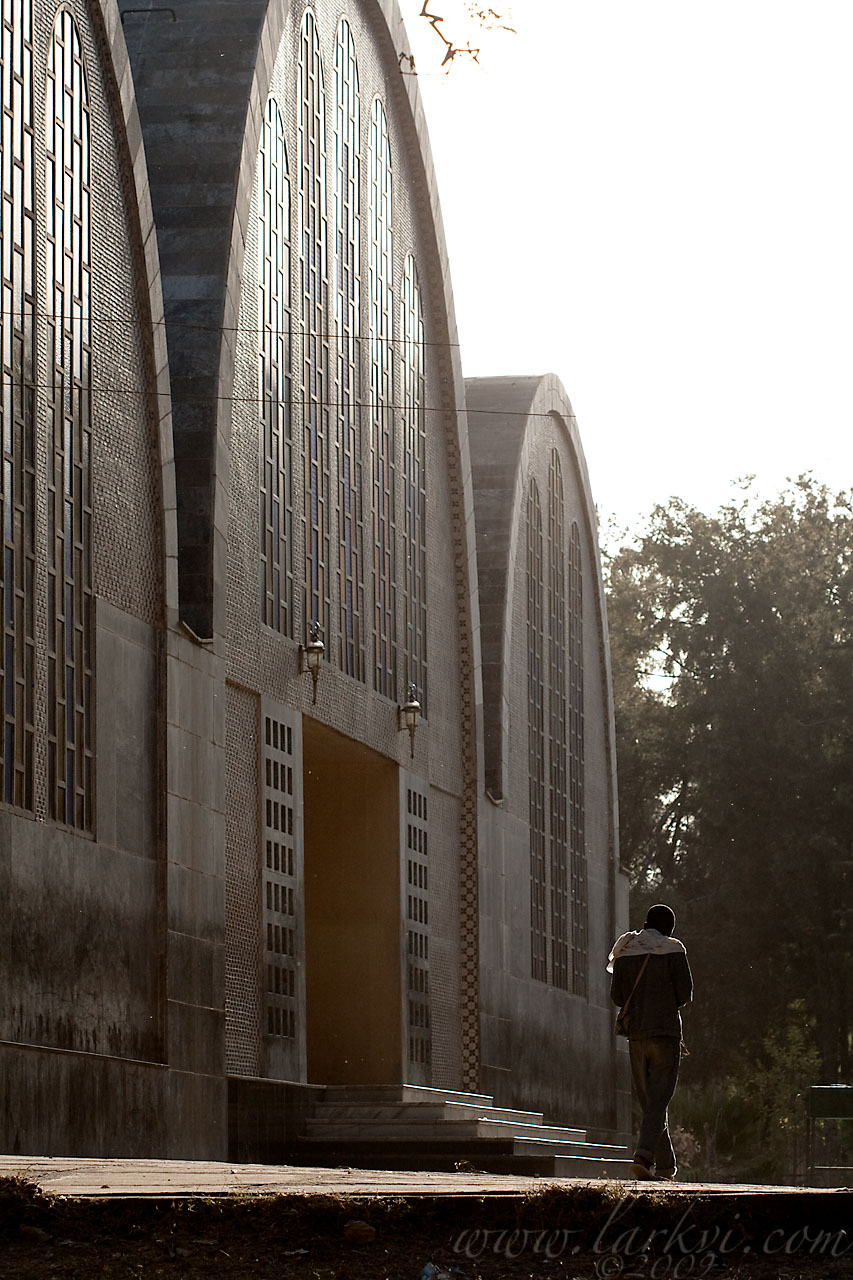A nun prays facing the chapel/treasury where Ethiopian tradition claims the Ark of the Covenant is stored.
According to the Kebra Negast, the Ethiopian national legend, the Queen of Sheba had a child of her rape by Solomon, named Menelik. When the child was grown, he asked of his father, so the queen told Menelik of Solomon (whom he apparently resembled perfectly) and gave him a ring to identify him. When Menelik traveled to Israel and showed the ring to his father, he was accepted with much rejoicing; Solomon appointed the first-born sons of all his chief advisors to be Menelik’s advisors, and to serve at the court in Ethiopia [sic]. As the eldest sons were due to inherit their fathers’ positions, much more desirable than foreign exile, they were understandably annoyed, and conspired with the son of the chief priest to take the Ark with them, that they might not be robbed of its proximity. When the time to leave came, they took the ark out at night, and fled to Ethiopia; because the Ark grants a supernatural bonus to overland movement, the pursuing army was unable to catch them.
When he returned to Ethiopia, Menelik established a housing for the Ark based upon that described in the bible, and it has remained in Ethiopia ever since, moving to a variety of places over time. One monk is assigned sole care of the ark and the upper-floor of the treasury that houses it for the remainder of his life, choosing another just before he dies. Lest you think there is only one guardian to get past, the monk’s compound is itself guarded by men with automatic rifles, and those who get too close to the Ark reputedly burst into flames, in any event.
Though the myth is generally compatible with the historic record, this has more to do with it being based in the same sources that we would use to evaluate it as anything else. There are loads of problems, mainly that the Queen of Sheba (Sabea) would not have lived in Ethiopia, but in Sabea–South Arabia. She is not a historic figure, but possibly the conflation of later queens–there were no female monarchs of Sabea during the time of Solomon, and the story is entirely mythical. It’s also unclear whether, as is claimed, Ethiopia was ever Jewish at all–I personally doubt it, and scholarship cannot agree on this point. If there is a grain of truth at the heart of the Solomon and Sheba myth, the parts that the medieval legend recounted in the Kebra Negast builds upon are wholly fictional. Given Ethiopia’s many wars and its great pride in ownership of the Ark, I also find it very odd that they have never carried the Ark, which, in the Old Testament, is a military super-weapon, into battle, nor paraded it around, like they do with the tabot. I have definitely experienced a large number of claims by priests and the Church here that would be easily falsifiable and have no religious reason for being hidden, but the secrecy surrounding them strongly suggests that they were made up–I would be loved to be provved wrong on this, if anyone ccan arrange for me to navigate the secret tunnel from Mt. Asheton to Na’abtela, or from Axum to Arabia. . .
Whether false or true (and churchmen here will not acknowledge in any way that it might not be true), it is a core part of Ethiopian religious belief, which has structured the way churches are consecrated around the tabot, ark-replicas that ensure the holiness of each church (Churches are not holy in Ethiopia, tabot are).


